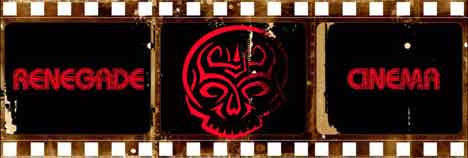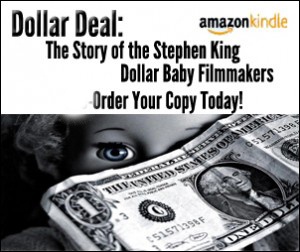The original serial television series The Lone Ranger was pretty silly and over-the-top. There were crazy stunts and a sense that this was all a giant fantasy series set in the Wild West. The new Gore Verbinski movie tries to do the exact same thing, but unfortunately, it causes the entire movie to be a convoluted mess that never really knows what it wants to be.
The story sticks very closely to the original origin story of the Lone Ranger and his trusty sidekick Tonto. In the original origin story, John Reid is a Texas Ranger who heads out with his men to bring in a wanted fugitive named Butch Cavendish. However, they end up riding into an ambush and all the Rangers are killed except one. When an Indian named Tonto rides by, he sees the massacre and recognizes the survivor as a man who helped him as a child.
Tonto nurses him back to health and becomes his partner. Together, the two become partners and John Reid dons a mask to keep the fact that he survived a secret. He also chooses never to shoot to kill, only to disarm and bring a man to justice.
The movie keeps the same premise with just a few changes. First, John Reid never helped Tonto when the Indian was a child. Second, it is John’s brother who is the great Texas Ranger, while John is an attorney who believes in justice. He is only given his father’s badge and deputized before the tragic mission. Third, “Kemo Sabe” no longer means “trusty scout,” it means “wrong brother.” Fourth, Tonto is a complete lunatic with serious mental problems and has been hunting down Butch Cavendish his entire life for revenge. Finally, Tonto and John Reid really can’t stand each other.
Those changes mean the origin of the story is the same, but the entire purpose and logic of their mission is changed for the worse.
First, let’s talk Tonto.
I am a huge Johnny Depp fan and can buy him in anything. I even buy into him here as a complete raving lunatic. However, while Johnny Depp’s Tonto is entertaining, and pretty funny at times, it is completely wrong for the character. Johnny is channeling Captain Jack Sparrow and putting the personality into someone who is supposed to be a noble Indian. Plus, all the humor here is juvenile at best. It is clear this is a Disney movie because they make the entire thing as ridiculous as possible.
While that means there are moments of great fun (when the William Tell Overture starts on the final climactic battle, I just smiled the entire time), they are offset by huge problems with the pacing of the movie. Tonto is used as a framing device in this movie. The story flips from 1933 where Tonto is part of a traveling carnival to the past as he tells a young boy in a Lone Ranger mask the origin of the legendary lawman. These scenes are humorous, but they take you completely out of the story. The fact that the movie is 2.5 hours long makes this scenes an unnecessary addition, only used to add humor and “cleverness” to the tale.
The truth is that the comedy is geared towards a younger audience, but there are scenes where men are gunned down, a scene where a man has his heart eaten, and other strange scenes (such as one involving rabid CG wererabbits) that make me puzzled at who this movie was made for. The one big scene with the Cavalry massacring an entire Comanche tribe really showed how violent this movie really is. The humor is for kids, the subject matter is not.
Armie Hammer was fine in the role as John Reid, but he was at times very stiff, which is confusing because I have seen him before in great performances and he just never looked comfortable in the Lone Ranger’s skin. Sure, maybe that is the point, but it hurts this movie. In my opinion, Hammer is still looking for his breakout role following his fantastic performance in The Social Network.
What hurts the movie most is that they patterned The Lone Ranger and Tonto as an odd-couple, using the buddy cop dynamic. The problem is that one of them (Tonto) was a nut-job and the other (Lone Ranger) was a buffoon who would have died quickly in a regular movie. Hell, the hero in the movie was the horse Silver, and they made the horse the brunt of one too many jokes to even take seriously by the end. Most of the time, you laughed at Tonto because he was ridiculous and you laughed at The Lone Ranger because he was a joke. That isn’t how these heroes are supposed to be.
William Fichtner was really good as Butch Cavendish, but his scared mouth made it hard to understand him at times. He basically was there to snarl and make snide comments. The real villain, as always in these movies, was the railroad man, which is not a spoiler because the movie spells out the fact he is slimy from the very start. There are also a few female characters, including Helena Bonham-Carter as a prostitute with a prosthetic leg that also happens to be a gun, but they serve little purpose outside of setting up various plot points. The main female in the movie (Ruth Wilson) is just a damsel in distress.
On the positive side, this is a beautiful movie. The cinematography is breathtaking and Verbinski uses every bit of the landscape to make this movie as expansive as any you will see this year. The one thing that classic westerns (ie. John Ford-era) do is really paint the picture with the landscape, and this movie uses every bit of the screen to tell its story. While I am not satisfied with the movie as a whole, it is a gorgeous picture.
At the end of the day, there are things to like in the new Lone Ranger movie, but those are just superficial. It makes you smile at times, and while the laughs are outnumbered by eye-rolling moments, there are some to have. The William Tell Overture is a highlight, but that is about it. At 2.5 hours long, this movie needed about 45 minutes of trimming and a lot more work when it came to balancing humor and action to be even slightly recommendable.






Yeah the buddy cop / odd couple dynamic really is puzzling and is almost a fatal flaw. Way too much of the humor falls flat and feels out of place. Plus, there’s such tonal whiplash it just messes the whole thing up as much as possible. It’s like they couldn’t get out of their own way. You can really tell how many hands were involved in this thing. Movies by Committee.
Good review, Shawn.
Agreed. If they had trimmed about 30 minutes off the movie and made a decision on what genre it was going to be, it might have been better. At least it was pretty.